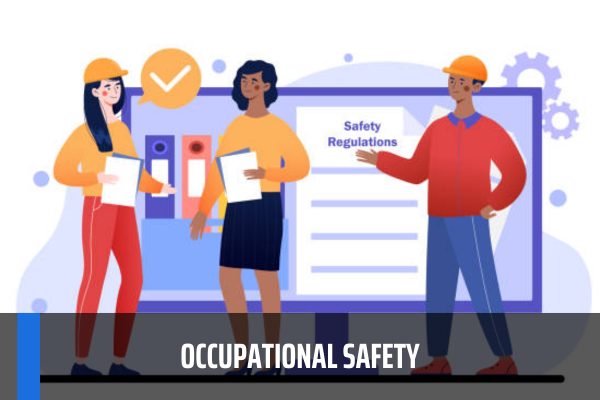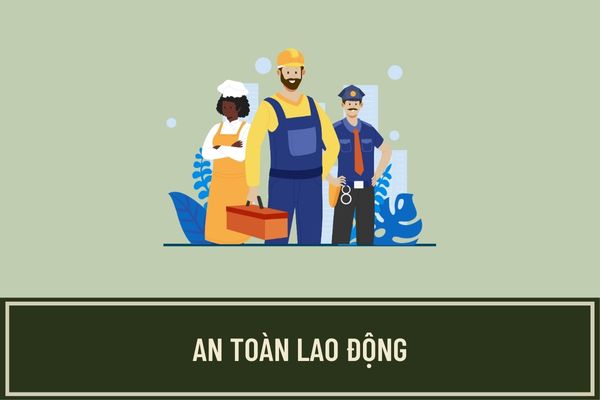What is occupational safety? What are actions against serious safety threat and emergency rescue regarding occupational safety in Vietnam?
Vietnam: What is occupational safety?
According to Clause 2, Article 3 of the Law on Occupational Safety and Hygiene 2015, it is explained as follows:
Interpretation of terms
For the purposes of this Law, these terms below shall be construed as follows:
...
2. Occupational safety means preventive measures for dangerous factors to avoid injuries or deaths to employees during the course of work.
...
Accordingly, occupational safety means preventive measures for dangerous factors to avoid injuries or deaths to employees during the course of work.

What is occupational safety? What are actions against serious safety threat and emergency rescue regarding occupational safety in Vietnam?
What are the prohibited acts regarding occupational safety in Vietnam?
Pursuant to Article 12 of the Law on Occupational Safety and Hygiene 2015, regulations on prohibited acts regarding occupational safety in Vietnam are as follows:
Prohibited acts
1. Concealing, providing false information about occupational accidents or occupational diseases; failing to conform to requests or implement measures for occupational safety and hygiene causing damage or threaten lives, assets and environment; compelling employees to work or prevent employees from leaving the workplace when there are hazards of occupational accidents threatening their health or lives or compelling employees to keep working even though such hazards have not been eliminated.
2. Evading paying or delaying paying insurance premiums; appropriating the insurance premiums or the insurance payout; cheating or forging documents on the insurance; failing to pay the insurance premiums for employees; managing and using the insurance fund not in accordance with regulations of law; illegally assessing database of the insurance.
3. Using machinery, equipment or materials having strict requirements pertaining to occupational safety and hygiene without any inspection or the inspection results show that those machinery, equipment or materials do not meet requirements; have no clear origin, expire; do not ensure quality; or cause environment pollution.
4. Committing a fraud in inspection, training in occupational safety and hygiene, occupational environment monitoring, or medical assessment of decreased work capacity upon occupational accidents or occupational diseases; prevent, make difficulties or cause damage to lawful right and interests of employees and employers in terms of occupational safety and hygiene.
5. Discriminate on grounds of sex in assurance of occupational safety and hygiene; discriminate against employees who refuse to keep working or leave the workplace when they believe that there are hazards of occupational accidents that threaten their lives or health; or discriminate against employees in charge of occupational safety and hygiene of the workplace, discriminate against occupational safety and hygiene officers and health officers.
6. Give work assignment that strictly requires occupational safety and hygiene to employees who have not been trained in occupational safety and hygiene.
7. Pay in cash instead of in-kind allowances.
Accordingly, the above acts are strictly prohibited acts in terms of occupational safety.
What are actions against serious safety threat and emergency rescue regarding occupational safety in Vietnam?
Pursuant to Article 19 of the Law on Occupational Safety and Hygiene 2015, actions against serious safety threat and emergency rescue are as follows:
- The employer shall have plans for actions against serious safety threat and emergency rescue and periodically organize manoeuvres as prescribed; provide technical and medical equipment to ensure rescue and first aid when a serious safety threat or an occupational accident occurs.
- Responsibility for taking actions against serious safety threat and emergency rescue:
+ The employer must give an order to stop operation of machinery, equipment, materials or substances at the workplace where there are hazards of occupational accidents or serious safety threat; may not compel employees to keep working or return to workplace if the hazards have been not eliminated; carry out actions against serious safety threat and emergency rescue to save people, assets and ensure occupational safety and hygiene for employees, people around the workplace, assets and the environment; and promptly inform the local government where the breakdown or emergency rescue occurs.
+ When a serious safety threat occurs in a business entity or an administrative division; the employer or the local government must urgently mobilize personnel, material resources and vehicles for emergency response as prescribed in specialized legislation;
+ When a serious safety threat occurs in multiple business entities or multiple administrative divisions; the employers and the local governments must respond to that breakdown and send reports to superior agencies as prescribed in specialized legislation.
In case the breakdown is beyond the capacity of business entities or local governments, they shall urgently report to their superior agencies in order to mobilize other business entities or local governments in rescue; the latter business entities or local governments must carry out measures for emergency rescue within their competence.
LawNet
